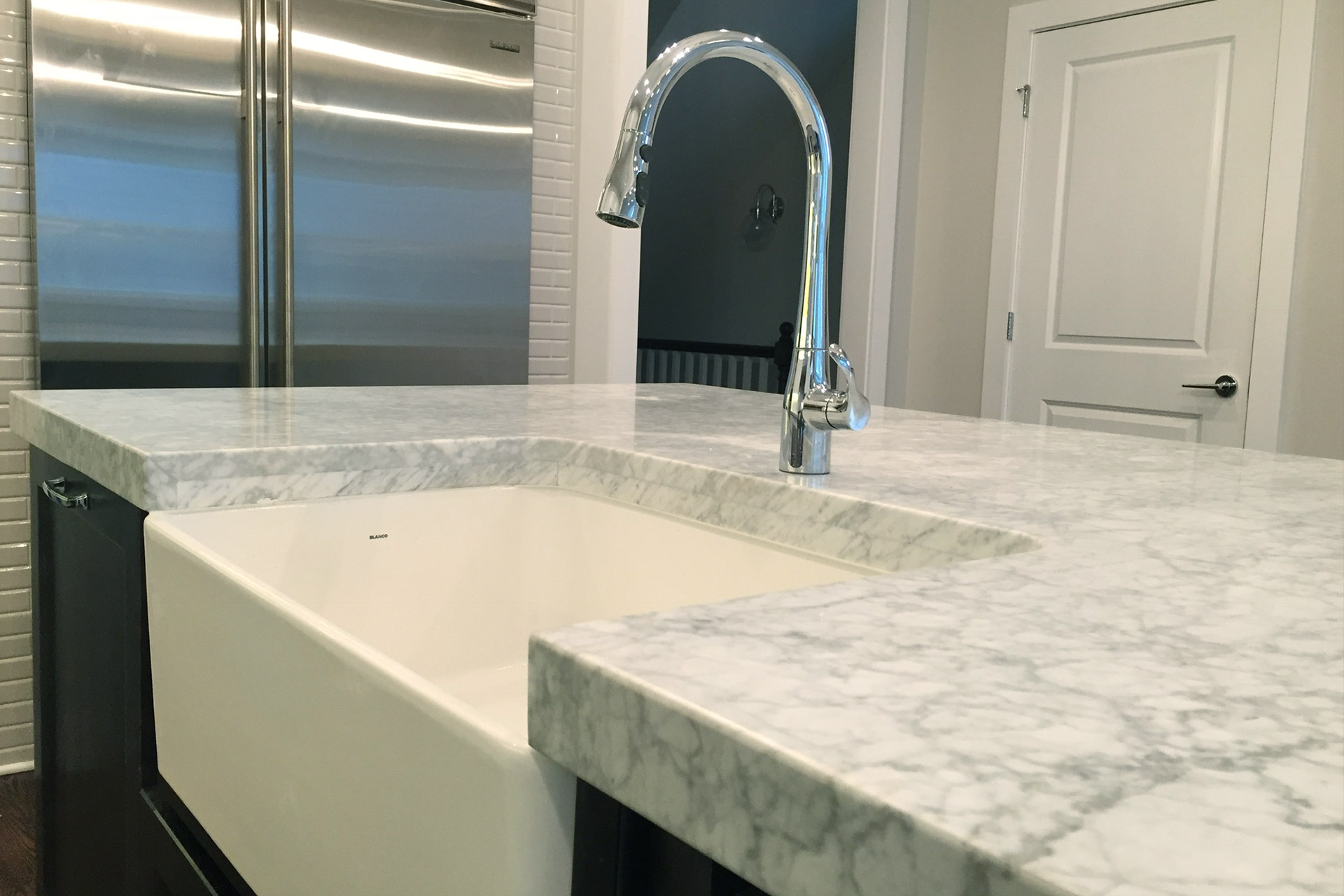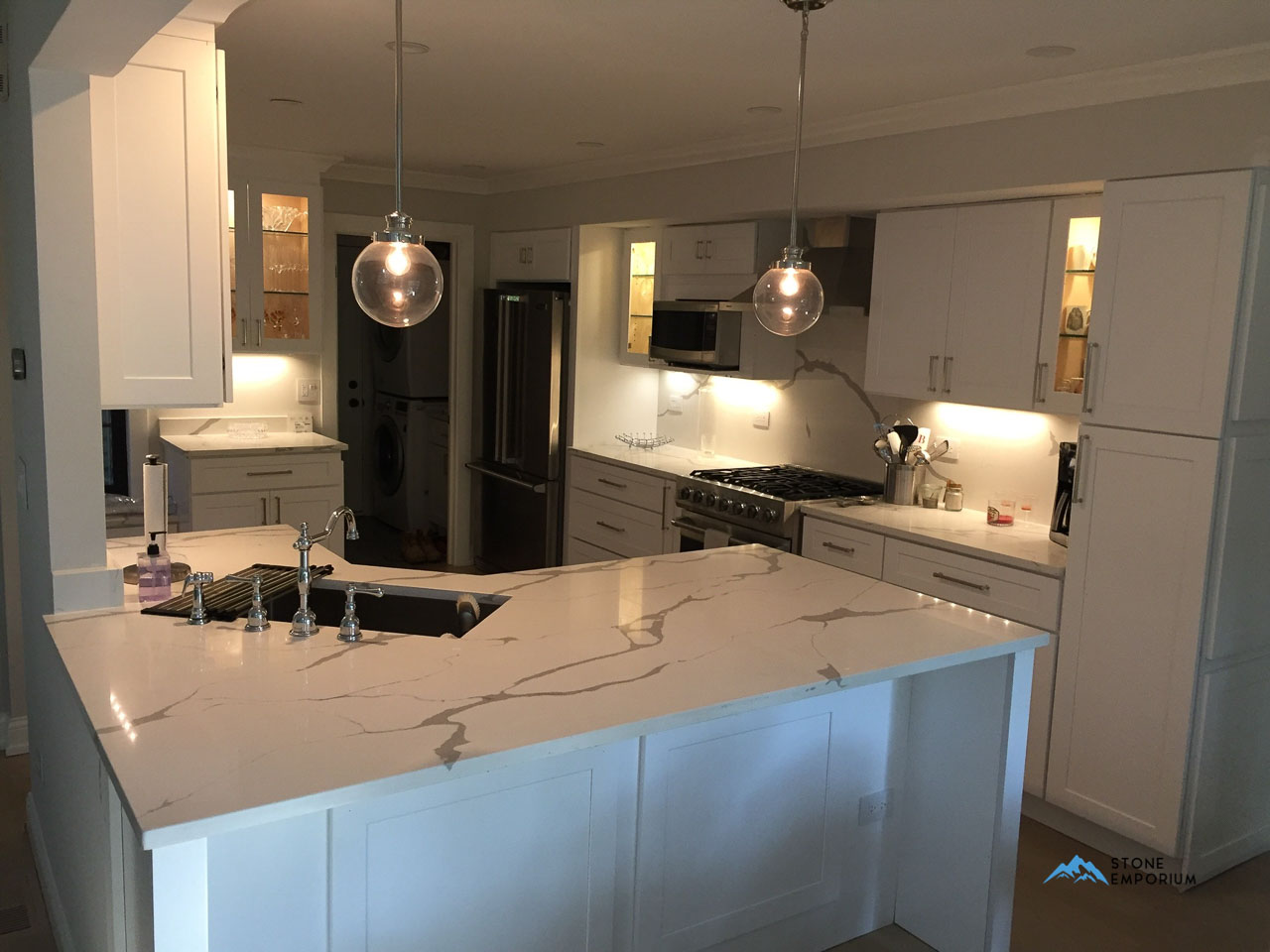The Quartz Countertops features
Once reserved for high-end kitchens and restaurants , quartz countertops are finding their way into more kitchens and bathrooms. As brands expanded and selling more, quartz becomes more accessible and prices more affordable.
A favorite premium countertop material of kitchen and bathroom designers and architects, quartz is often confused with natural stone and solid surface countertop materials.
Like natural stone, quartz possesses a deep, rich appearance and a solid, rock-like feeling, for example Cambria looks exactly like a natural stone witch make the process harder to reproduce it and the price is also premium.
Like solid surface, quartz has man-made additives that stabilize the material and eliminate natural stone’s unpredictability. Beyond that, quartz–also called engineered stone–is its own, unique material.
Brand Similarities and Differences
All quartz countertops, despite the brand, are the same in the most part.
Despite the brand, these qualities are the same:
• Composition: Around 93% mineral content. The high degree of mineral content gives quartz its distinctive look and feeling. By contrast, solid surface’s 66% mineral / 33% polymer content lends a silky, soapy feeling to the material.
• Hardness: The process of creating quartz countertops saves the hardest mineral (quartz) and eliminates softer minerals and impurities. This means that quartz counters are harder and more durable than natural slab granite.
• Low Water Absorption Rate: Quartz’ low water absorption rate of 0.5% is on par with another low porosity material–porcelain tile. If the material weighs less than half of one-percent more as a result of water absorbing into its surface, it is considered to be nonabsorbent.
• Heat Resistance: Quartz’ minerals (not binders) are 100% impervious to heat, typically up to 360 degrees F but only for a short duration. As one associate designer of kitchen and bath notes, “This material is not heat resistant. The binding materials will be damaged at high temperatures. Think: hot fry pan. Some people think quartz is indestructible and that’s just not the case.”
• Visible Seams: Unless the countertop is small enough to be fabricated from a single slab, two slabs often need to be seamed together. Depending on the skill of the installer, this seam can be minimized but it will never be invisible.Differences between the brands include:
• Designs: The range of designs is the single biggest difference between quartz brands. “Designs” is the industry shorthand for several qualities of the slab’s visual appearance: overall color, size and shape of minerals, streaks, and striations. Edge profiles are manufactured into the slab by the fabricator.
• Slab Sizes: Due to the need to seam quartz, it is better to have larger slabs to reduce the chance of this happening. As our associate notes, “I like quartz and there are several differences beyond color and pattern. When I can specify a jumbo slab and avoid using two slabs for a project, it’s a win and a cost savings.”
• Warranties: All quartz brands come with a warranty. What differs is the length, limitations, and transferability of these warranties from the manufacture to the customer.
• Prices: As can be expected, prices differ between brands. Quartz slab prices are wholesale-only and a part of the price is negotiated per job size and components added.


